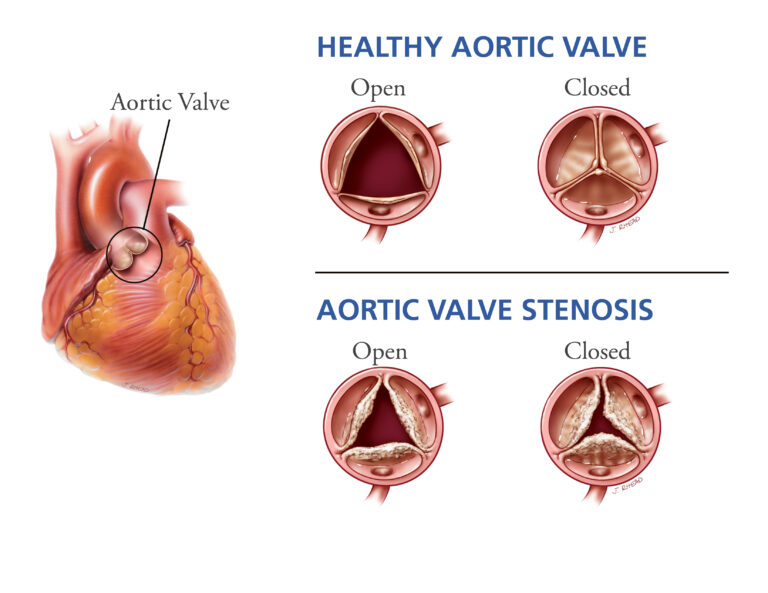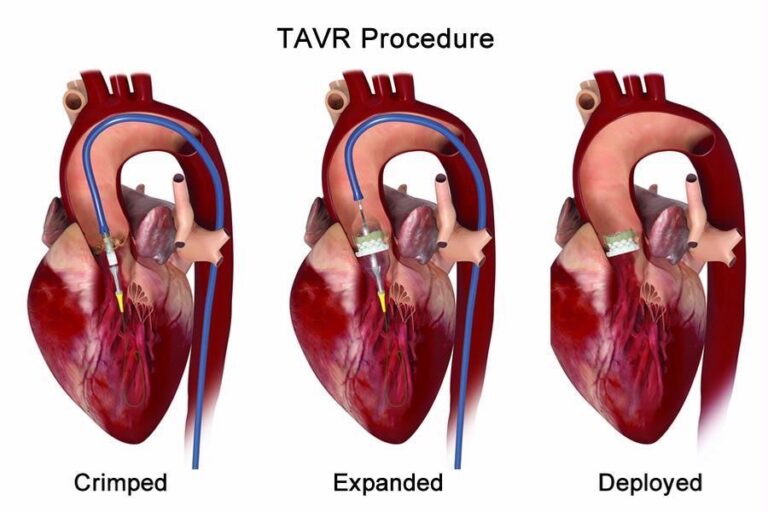A Transcatheter Aortic Valve Replacement is full form of TAVR is also Called as Transcatheter Aortic Valve Implantation TAVI and it is done to treat aortic valve stenosis. Aortic valve stenosis is a condition where the aortic valve is narrowed and fails to open properly. The Transcatheter Aortic Valve Replacement (tavr) is a minimally invasive heart procedure done to replace the transcatheter aortic valve.
The procedure involves replacing the damaged aortic valve with animal heart tissue. It is also called a biological tissue valve. In some cases, this biological tissue valve may be placed into an existing biological tissue valve that is no longer working.
In all improvement in overall quality of life is what a heart patient should expect and should be able to easily lead to after a successful Cardiac Rehabilitation.
When Is TAVR Done?
A TAVR surgery is opted when the patient is not eligible to go through open-heart surgery to treat aortic stenosis. Aortic valve stenosis is a serious heart condition that occurs when the heart’s aortic valve thickens and is unable to open completely. This limits the blood flow from the heart to the rest of the body. This can cause symptoms like chest pain, fainting, fatigue, leg swelling and shortness of breath. The extreme conditions may also lead to heart failure and sudden cardiac death.
Advantages Of TAVR

- The TAVR is a minimally invasive procedure. It causes fewer complications than traditional surgery where the entire chest wall is opened to expose the heart.
- The procedure involves making smaller incisions of few mm and thus less blood loss.
- A minimally invasive procedure allows a shorter healing period and faster recovery
- A shorter stay in TAVR hospital in thane is needed for recovery and scar healing
TAVR Procedure

Whether a patient needs an open-heart surgical procedure or a TAVR depends upon various conditions. It is important to evaluate the risk factors that may affect the procedure. Once the TAVR procedure is finalized, the doctors can go ahead with the surgery.
The procedure is performed under local or short general anesthesia. A tiny incision is made in the groin to access the heart through a blood vessel. A catheter is then inserted and the catheter is guided towards the heart into the aortic valve. The new valve is then positioned at the appropriate place and the catheter is then removed.
The patient is kept under observation for few days in intensive care. Medications for pain relief and to prevent infection along with others are typically administered. Regular follow-ups and checkups are must after the discharge to look up if the new valve is functioning as expected.
Certain precautions and lifestyle changes are suggested after the surgery by a TAVR Specialist Cardiologist . These include excellent dental hygiene to help prevent these infections, a heart-healthy diet, exercising regularly, maintaining a healthy weight and avoiding smoking.
In conclusion, the TAVR procedure in Thane could be opted for patients in all risk categories. TAVR is a relatively new technique that could prove to be effective in improving the quality of life of patients who otherwise have no or restricted options for aortic valve treatment.





